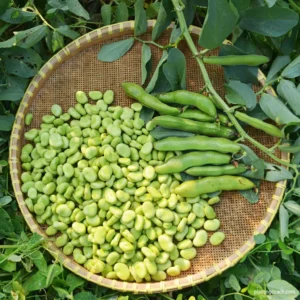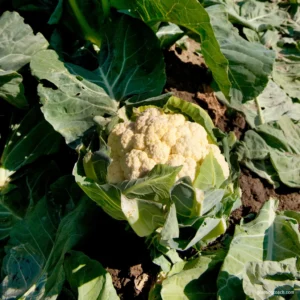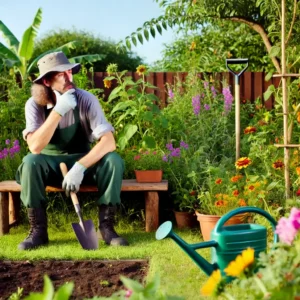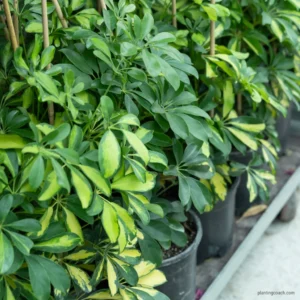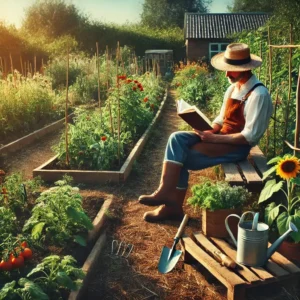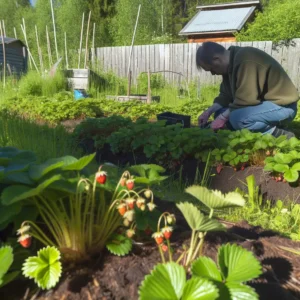When summer knocks at our doorsteps, gardeners everywhere start thinking about transforming their outdoor spaces into a haven of color. They tend to search for summer plants that will flower all summer long. Choosing the right plants is essential for achieving this, especially when selecting perennials that promise vibrant blooms throughout the season. Perennials that bloom all summer are the backbone of a well-planned garden.
The plants listed here offer a continuous display of colors and textures. Such plants are known for their resilience and prolonged blooming period, and they keep the garden lively and attract pollinators such as bees and butterflies, contributing to the health of your garden ecosystem. In this blog, we explore 8 Plants That Flower All Summer, which not only increase the beauty of your garden but also thrive under the full sun from June to September. Let’s dive into the world of endless summer colors with these reliable perennials.
8 Plants That Flower All Summer
Perennial Geraniums
Perennial geraniums, often known as cranesbills, are a gardener’s favorite. Such flower plants fill the gaps in the flowerbeds with their delicate and vibrant blossoms. Flourishing in both sun and shade, these hardy plants offer a variety of colors. From deep blues to soft pinks, they ensure that they fit into any garden palette. What makes geraniums particularly appealing is their ability to bloom continuously from early summer into the fall.

The care routine for perennial geraniums is pretty straightforward: they prefer well-drained soil and can tolerate a range of sunlight exposures, though they bloom best with a few hours of direct sunlight. Regular deadheading will encourage more blooms, keeping your garden vibrant. Their sprawling habit makes them excellent ground cover, reducing weed growth and providing beautiful underplanting for taller summer bloomers. With minimal maintenance, these geraniums will return year after year, making them dominant in the perennial garden.
Daylilies (Hemerocallis)
Daylilies are among the most carefree of all flowering perennials. They thrive in almost all climates and conditions, requiring little attention once established. These plants earn their name from the blooms that typically last just a day. The numerous buds on each plant ensure a successive display of flowers from early summer until the first frost.

Daylilies are available in various colors—from vibrant oranges and reds to more subtle shades of purple and pink. They can serve as a focal point in any landscape. Their strappy foliage also adds textural contrast to the garden, which remains attractive even when the plants are not in bloom. For the best results, plant daylilies in well-drained soil in a sunny to partly shaded location.
A unique aspect of daylilies is their adaptability. They can be used in flower beds, borders, or even as erosion control on slopes. They are drought-resistant once established, making them ideal for xeriscaping or gardens in dry climates. Divide clumps every few years to maintain vigour and to spread their beauty to other parts of your garden.
Coreopsis (Tickseed)
Coreopsis, commonly referred to as tickseed, is a standout performer in the summer garden. These hardy perennials are quite famous for their vibrant daisy-like flowers that can light up even the dullest corners. They come in a spectrum of colors, including gold, pink, red, and bicolor, with blooms from early summer until fall. Tickseed plants are not only beautiful but also remarkably easy to care for, thriving in dry to medium moisture soils and full sun.

Planting coreopsis will attract a variety of pollinators, making your garden a haven for butterflies and bees. These flowers are excellent for cut flower arrangements. They bring the beauty of your garden indoors. To encourage a longer blooming season, deadhead the spent flowers regularly. Coreopsis is drought-tolerant once established, which makes it a fantastic choice for gardeners looking to reduce their water usage. For gardeners in colder climates, mulching in the fall will help protect the plants and ensure their return next year.
Echinacea (Coneflower)
Echinacea, or coneflower, is famed not only for its beauty but also for its medicinal properties, making it a dual-purpose addition to any garden. These robust plants are native to North America. They thrive in full sun or light shade, preferring well-drained soil. With their large, showy heads, they bloom from early summer to fall, presenting hues of purple, pink, red, and white that stand out against their dark green foliage.

Echinacea plants are highly attractive to pollinators, particularly butterflies and bees, improving the biodiversity of your garden. They are also known to be deer-resistant, making them suitable for rural gardens where wildlife may be a concern. Minimal care is required once Echinacea is established. However, deadheading can promote additional blooms and extend the flowering period. In the winter, the dried seed heads provide architectural interest and can be left on the plant to feed birds or collected for sowing the following spring.
Lavender
Lavender is beloved for its soothing fragrance and ability to withstand hot, dry conditions, making it ideal for summer gardens. This perennial herb is native to the Mediterranean, so it thrives in full sun and well-drained soil. It does not sit even if the ground is wet, especially during winter months. Lavender’s silver-green foliage and purple spikes of flowers make it a beautiful addition to any garden, and it blooms from late spring through summer.

The versatility of lavender is unmatched, as it can be used in borders, herb gardens, or as informal hedging. The flowers are perfect for drying and can be used in sachets, soaps, or simply enjoyed as dried bouquets. To ensure robust growth, prune lavender in early spring or after flowering to maintain its shape and encourage new growth. Additionally, lavender’s aromatic properties are said to repel mosquitoes and other pests, making it a practical choice for natural pest control in your garden.
Black-eyed Susan (Rudbeckia)
Black-eyed Susan is a hardy perennial that exudes a wildflower charm with its bright yellow petals and dark brown centers. These plants are a staple in many summer gardens due to their ability to bloom from mid-summer until fall. They provide long-lasting color when many other plants begin to fade. Black-eyed Susans thrive in full sun but can tolerate partial shade, making them versatile for various garden settings.

These flowers are excellent for attracting wildlife. Their blooms are a favorite among butterflies, and their seeds attract birds in the fall and winter. Care for these plants is minimal; they are drought-resistant once established and can thrive in a variety of soil conditions. To encourage more blooms and maintain plant health, deadhead spent flowers regularly. Additionally, Black-eyed Susan’s ability to self-seed makes it an excellent choice for filling in large, open areas of the garden. But in some cases, you may need to control their spread to prevent them from overtaking other plantings.
Shasta Daisies
Shasta daisies are known for their classic beauty, featuring white petals that radiate around bright yellow centers. They bloom abundantly from early summer to early fall, offering a fresh, crisp look in the garden for several months. Shasta daisies prefer well-drained soil and full sun, although they can tolerate light shade. These flowers are particularly favored for their neat appearance and ease of care.

To keep your Shasta daisies looking their best, deadhead the flowers as they wilt to encourage more blooms. These plants are ideal for borders, containers, and the cutting garden, as their flowers hold up well when snipped for bouquets. Additionally, Shasta daisies can be divided every few years in the spring or fall to maintain vigor and spread their cheerful presence throughout your garden. Their robust nature makes them suitable for new gardeners and those looking for low-maintenance gardening options.
Sedum (Stonecrop)
Sedum, or stonecrop, is a succulent perennial that excels in hot, dry conditions, making it perfect for summer gardens. These plants come in a variety of shapes, sizes, and colors, with some types flowering from late summer into fall, providing interest when many other plants are beginning to decline. Sedums are particularly valued for their drought tolerance and their ability to thrive in poor soil, requiring little care once established.

The thick, fleshy leaves of sedum store water, enabling the plant to withstand prolonged dry spells. They are excellent for rock gardens, walls, roof gardens, and other challenging sites. When sedum flowers, it produces clusters of star-shaped flowers that are highly attractive to bees and butterflies. For best growth, plant sedums in areas with full sun and well-drained soil. They are also resistant to deer and other herbivores, making them a good choice for gardens in rural areas.
Summary
The eight plants we’ve discussed—Perennial Geraniums, Daylilies, Coreopsis, Echinacea, Lavender, Black-eyed Susan, Shasta Daisies, and Sedum—offer a diverse range of colors, textures, and heights, making them versatile choices for any garden setting. Each has its own unique benefits, whether it’s attracting pollinators, providing aromatic foliage, or thriving in challenging growing conditions. By choosing these resilient and vibrant perennials, you can increase the overall attractiveness of your outdoor space and contribute to the local ecosystem, supporting pollinators and other wildlife. So, consider these perennials when planting your next garden; they are sure to bring color, life, and beauty to your outdoor sanctuary.
FAQ
Q1: Which plant is best in summer?
A1: While the best plant for summer depends on your specific garden conditions and planning preferences, Daylilies and Lavender are particularly notable for their resilience and beauty during the hot months. Daylilies offer a wide range of colors and are remarkably carefree once established. Lavender, on the other hand, not only blooms beautifully but also provides a delightful scent and is drought-resistant.
Q2: What is the longest flowering summer plant?
A2: Coreopsis, also known as tickseed, is one of the longest-flowering summer plants, providing color from early summer into the fall. These vibrant, daisy-like flowers are not only long-lasting but also attract pollinators and are easy to care for, making them an excellent choice for extended seasonal color.
Q3: Which flower is for all seasons?
A3: Sedum, or stonecrop, is a versatile plant that offers interest across all seasons. In summer, it blooms with attractive clusters of flowers, while its succulent leaves provide visual interest throughout the year. Additionally, many sedum species offer winter interest with their structural forms and frost-resistant foliage.
Q4: What should I do if my summer flowers aren’t blooming as expected?
A4: If your summer flowers are not blooming as expected, consider several factors: ensure they are getting enough sunlight, check if they need fertilizing, and make sure they are not overcrowded. Also, verify that you’re watering them adequately—not too much and not too little. If issues persist, it might be necessary to test your soil and adjust its nutrient levels or pH.
Q5: How can I extend the blooming season of my summer flowers?
A5: Extending the blooming season can be achieved by regular deadheading of spent flowers, which encourages most perennials to produce new blooms. Additionally, providing a balanced fertilizer during the growing season can promote longer blooming periods. Finally, consider planting a variety of species that bloom at different times throughout the summer to ensure continuous color in your garden.


